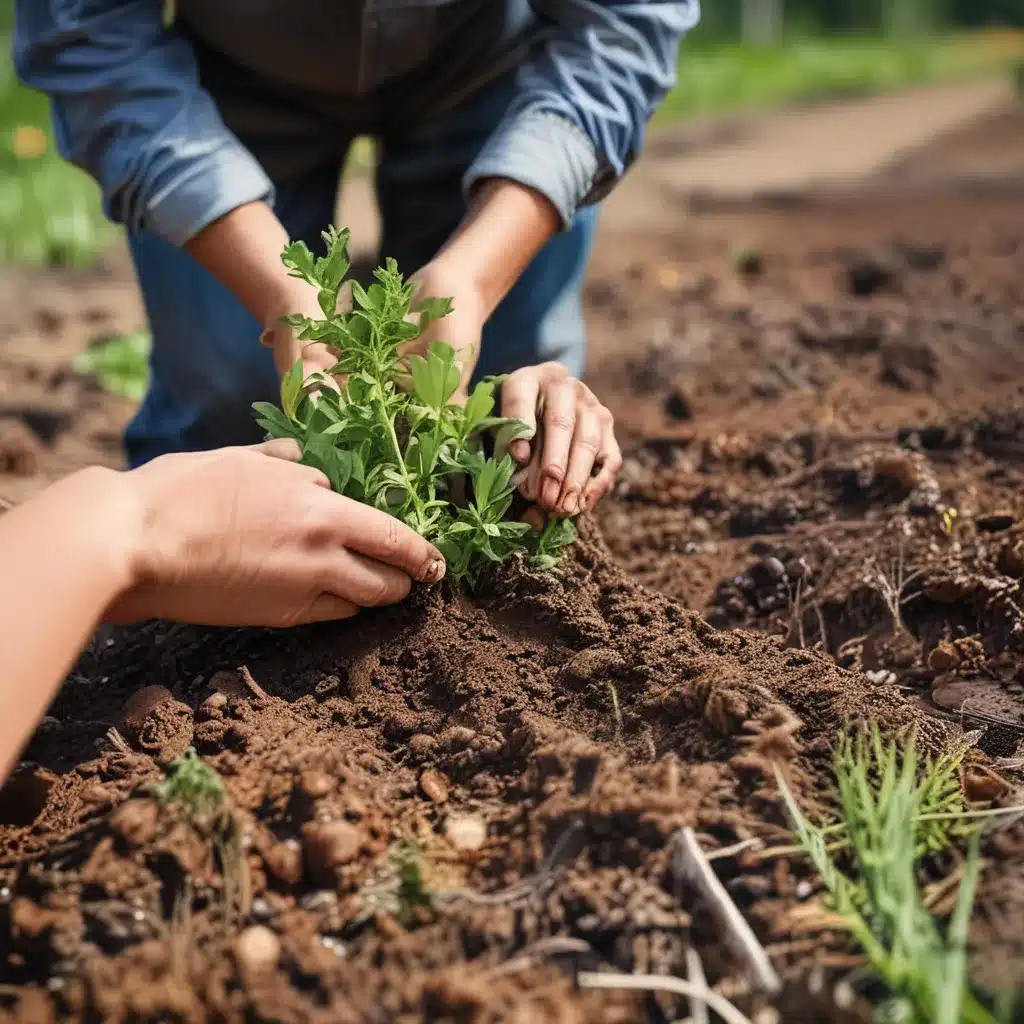
Soil: The Unsung Hero of our Gardens
As a passionate gardener, I’ve always been fascinated by the intricate world of soil. It’s the unsung hero that quietly nurtures the plants we love, from vibrant vegetables to lush flowers. But let’s be honest, soil can be a bit of a mystery, right? I mean, who really understands all the complex interactions happening beneath our feet?
Well, my friends, that’s all about to change. Today, I’m on a mission to uncover the secrets of soil and share the sustainable practices that can lead to bountiful harvests. So, grab your gardening gloves and get ready to dive deep into the world of healthy, thriving soil.
The Importance of Soil Health
Now, you might be wondering, “Why should I even care about soil health?” Well, let me tell you, the health of your soil is the foundation for everything that grows in your garden. Think about it this way – if your soil is unhealthy, your plants are going to struggle, no matter how much water or fertilizer you give them.
According to the USDA Natural Resources Conservation Service, soil health is all about maintaining a delicate balance of physical, chemical, and biological properties. This means ensuring your soil has the right mix of nutrients, organic matter, and beneficial microorganisms to support plant growth.
But how do you know if your soil is healthy? Well, let’s take a closer look at some of the key indicators.
Assessing Soil Health: A Hands-On Approach
One of the best ways to get a feel for your soil’s health is to literally get your hands dirty. I like to do a simple “soil squeeze test” – grab a handful of soil, give it a gentle squeeze, and then observe how it reacts.
If the soil holds its shape, but crumbles easily when you poke it, that’s a good sign. It means your soil has the perfect balance of texture and structure. On the other hand, if the soil stays clumped together or feels overly compacted, that could be a sign of poor drainage or a lack of organic matter.
Another great way to assess soil health is to look at what’s living in it. Healthy soil teems with a diverse array of beneficial microorganisms, from bacteria and fungi to earthworms and insects. These little critters play a crucial role in breaking down organic matter, releasing nutrients, and improving soil structure.
So, the next time you’re out in your garden, take a moment to dig a little deeper and see what’s happening beneath the surface. You might just be surprised by what you find!
Building Healthy Soil: Sustainable Practices
Now that we’ve got a better understanding of what healthy soil looks like, let’s talk about how to actually create it. The key is to adopt sustainable practices that mimic the natural processes happening in healthy ecosystems.
Embrace Organic Matter
One of the most important things you can do for your soil is to add plenty of organic matter. This can come in the form of compost, well-rotted manure, or even shredded leaves and other plant debris. Organic matter not only provides essential nutrients for your plants, but it also helps improve soil structure and water-holding capacity.
For example, River Valley Ranch in Wisconsin offers a high-quality mushroom compost that is derived from their organic mushroom cultivation process. This compost is loaded with essential nutrients and organic matter, making it an excellent soil amendment for gardens and farms.
Embrace Cover Crops
Another great way to build healthy soil is to plant cover crops. These are plants that you grow specifically to improve the soil, rather than for food or flowers. Cover crops help to prevent erosion, add organic matter, and attract beneficial insects and microorganisms.
Some popular cover crop options include:
– Clover: Fixes nitrogen in the soil and helps suppress weeds
– Rye: Builds organic matter and improves soil structure
– Vetch: Adds nitrogen and helps retain moisture
By incorporating cover crops into your garden rotation, you can create a self-sustaining ecosystem that keeps your soil healthy and productive year after year.
Minimize Soil Disturbance
One of the biggest mistakes gardeners make is over-tilling or digging up their soil too frequently. While it might seem like a good way to “loosen” the soil, this can actually disrupt the delicate web of life that’s been established in your garden.
Instead, try to minimize soil disturbance as much as possible. This could mean using no-till or low-till techniques, or simply laying down a thick layer of mulch to suppress weeds and retain moisture.
Rotate Crops and Companion Plant
Another great way to build healthy soil is to rotate your crops and companion plant. By growing a diverse array of plants, you can create a more balanced ecosystem that supports a wide range of beneficial organisms.
For example, you could try planting legumes like peas or beans next to your tomatoes. The legumes will help fix nitrogen in the soil, while the tomatoes will provide shade and support for the legumes.
Reaping the Rewards: Bountiful Harvests
As you can see, building healthy soil is all about working with nature, not against it. By embracing sustainable practices like adding organic matter, planting cover crops, and minimizing soil disturbance, you can create a thriving, self-sustaining ecosystem in your garden.
And the best part? When your soil is healthy, your plants will thrive – and you’ll be rewarded with bountiful harvests that are not only delicious, but also nourishing for both your body and the planet.
So, what are you waiting for? It’s time to get out there and start unlocking the secrets of your soil! Who knows, you might just discover a whole new world beneath your feet.
And don’t forget, if you’re looking for high-quality soil amendments like mushroom compost, be sure to check out Thornappple CSA – they offer a wide range of sustainable products to help your garden reach its full potential.



